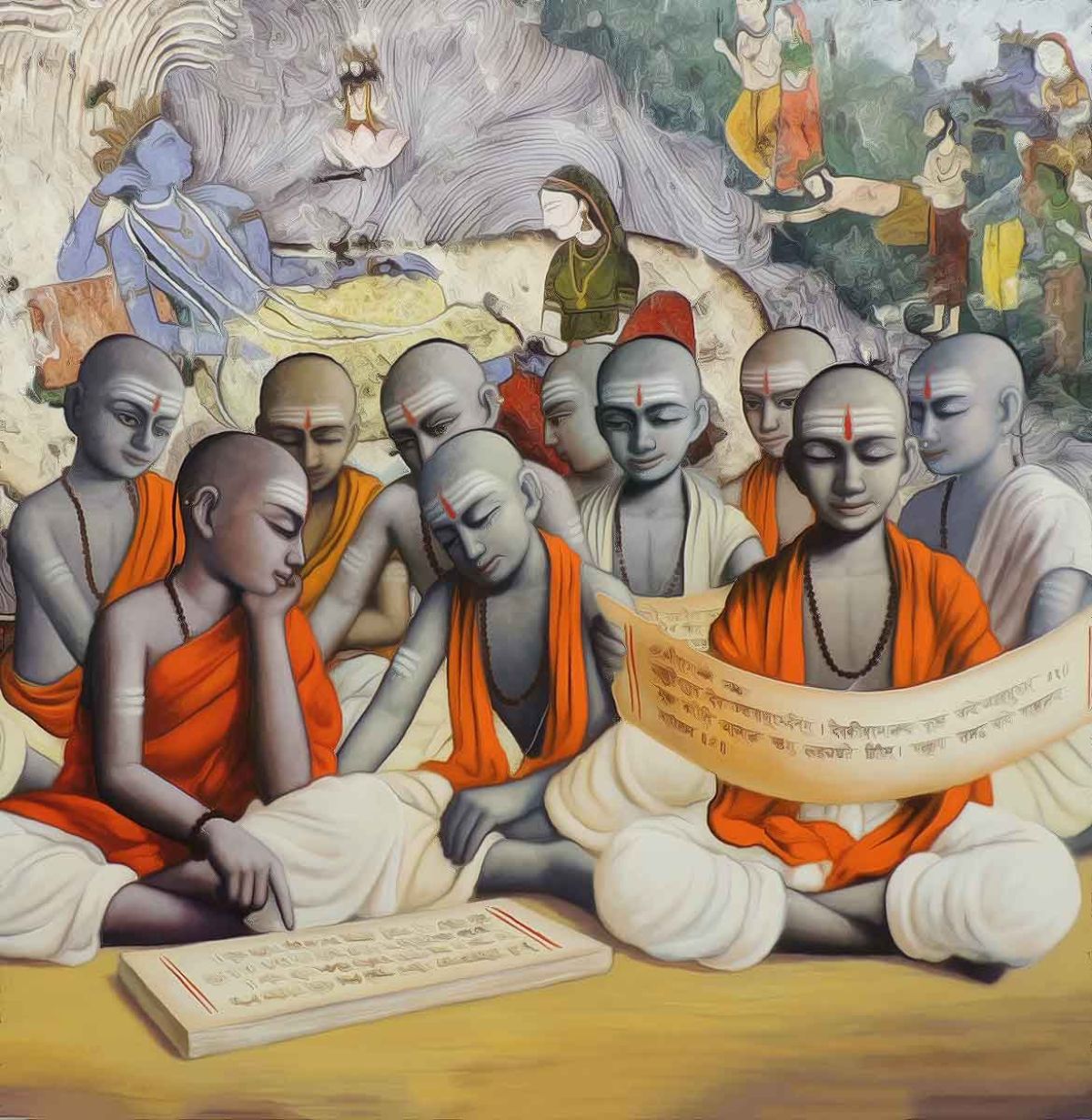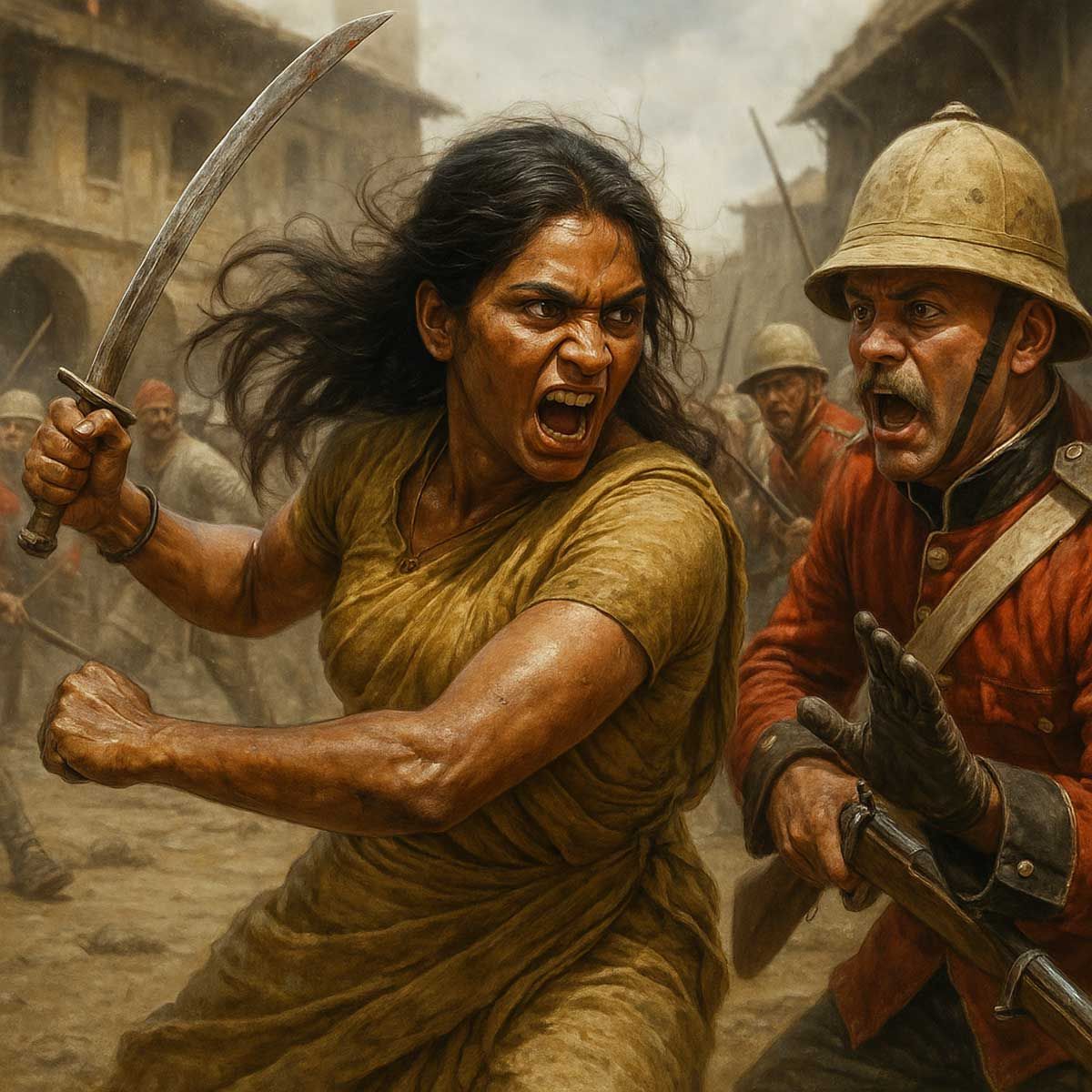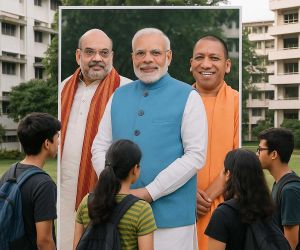MORE COVERAGE
Twitter Coverage
Satyaagrah
Written on
Satyaagrah
Written on
Satyaagrah
Written on
Satyaagrah
Written on
Satyaagrah
Written on
JOIN SATYAAGRAH SOCIAL MEDIA
"You tell a big enough lie and tell it frequently enough, it will be believed": 'The Beautiful Tree' by Dharampal establishes that Britishers learned about establishing schools from India, Collector AD Campbell copied gurukul for mass education in Europe

"You tell a big enough lie and tell it frequently enough, it will be believed": 'The Beautiful Tree' by Dharampal establishes that Britishers learned about establishing schools from India, Collector AD Campbell copied gurukul for mass education in Europe
Ancient India was celebrated for its learning all over civilized Asia and Europe. Metatheses (ca. 302 BC) was struck by the depth of this learning during his mission to the court of Chandragupta. Fa-hien, the famous Chinese traveler (399-413 D) spent some years at the Paliputra and Tamralipti monasteries. He also spent two years in Ceylon which too had its monasteries after the Indian fashion.
These monasteries were a big affair, housing and teaching several hundred monks each. Two centuries after came Hiuen Tsang undertook a hazardous journey across Central Asia and northern parts of India. During the seventeen years, he spent in India (629-624 AD) he visited many monasteries belonging to the Mahayana and the Hinayana schools. He visited Hiranyaparvata, the Golden Hill (Munghir), a city on the bank of the Ganges, which had 10 Sangharamas with 4,000 priests, and 12 Deva temples. At Tamralipi (at the mouth of Hoogly), there were 10 monasteries with a thousand monks. The same story is told of many other towns he visited.
I-Tsing (671-695 AD) came to India by sea route. He spent ten years studying at Nalanda University, the most dominant at his time. It was supported by a revenue of 200 villages and housed more than 3,000 monks. The building contained eight halls and three hundred apartments. On the way back, he spent seven years in Sribhoja (Sumatra), which was a cultural extension of India.
In the face of continued Muslim onslaught from across the northwest frontier, Hindu Buddhist sciences began to retire into the interior.
Alberuni tells us how “Mahmud ruined the prosperity of the country (India)”, how they (Hindus) were turned into “atoms of dust scattered in all directions” and how “this is the reason, too why Hindu sciences have retired far away from those parts of the country conquered by us, and have fled to places which our hand cannot yet reach, to Kashmir, Benares, and other places.” A time passed and the Muslim inroads became deeper, Hindu centers of learning were destroyed in the interior too. Eventually, from there they retired to neighboring countries like Tibet.
Tibet preserved as best as it could, what India was no longer in a position to do.
For example, 4000 books belonging to the Sanskrit, Pali, and Prakrit literature were translated into the Tibetan language. Today, about 3800 of them are no longer even known in India. They were so completely destroyed.
The work of destruction was so complete. Today, much of old India is found in neighboring countries like Tibet and Siam, and Cambodia; and India’s old past history cannot be reconstructed without their aid.
The Nalanda University continued its glorious existence for a thousand years till it was destroyed by the Muslims. Bakhtiyar Khilji invaded Bihar in 1197 AD and found that as Odantapui (present-day Bihar-Sharif in Patna District) “most of the inhabitants were Brahmins with shaven heads. They were put to death. A large number of books were found there, and when the Mohammedans saw them, they called for some persons to explain their contents, but all the men had been killed. It was discovered that the whole fort and city was a place of study. In the Hindi language, the word Behar (vihar) means a college” (Elliot and Dowson, The history of India, Valhi, p.306).
After this, India entered an era lasting over several centuries which may be called its dark period. Hindus came under the repeated attacks of the Muslims who destroyed their places of worship and learning. But their hands could not reach everywhere: and even in places where they were more securely established, their rule did not remain undisputed for long. As a result, Hindu India and its institutions, though badly mauled, still survived.
|
European Era
As we enter the period of European conquest, we find that the European travellers and administrators bear testimony to the great veneration in which the Hindus hold learning and instruction. One of the earliest observations made on the subject of indigenous education was by Fra Paolino da Bartoomeo.
Born in Austria, he spent 14 years in India (1776-1789). Recalling what Megasthenes wrote, he says that the method of teaching and writing existent in India two hundred years before Christ, and that he still found it in practice. “No people, perhaps on earth have adhered to their ancient usage and customs as much as the Indians,” he says. He tells us that the Greek historians represent the Indians as people of greater size and much more robust than those of other nations. He himself “seldom saw in India a person either lame, crooked, or otherwise deformed”. Among many factors, climatic and cultural (like wholesome nourishment, cold bath, oil massage etc.) which he recounts, he says that “temperance and education contribute, in an uncommon degree, to the bodily conformation, and to the increase of these people”. Then he describes the method and practice of teaching and instruction as he found them n Malabar schools.
|
We may here also quote the testimony of Brigadier-General Alexander Walker who served in India between 1780 and 1810. He says that “no people probably appreciate more justly the importance of instruction than the Hindus”. According to him, “they sacrifice all the feelings of wealth, family pride and caste that their children may have the advantage of a good education”. He also found that this love of earning was no exclusive characteristic of the Brahmins but “this desire is strongly impressed on the minds of all the Hindus. It is inculcated by their own system, which provided schools in every village.” He adds that the spirit of enquiry and of liberty has most probably been affected by the soodors [Shudras] who compose the great body of population, and who were in possession of the principal authority and property of the country”.
The fact of widespread education – a school in every village – was uniformly noticed by most early observers. Even writing as late as 1820, Abbe J. A. Dubois says that “there are to be found…that the students learn in them all that is necessary to their ranks and wants…namely, reading, writing, and accounts”.
The Government Survey
For a hundred years, the hands of the British Government were full of the problems of military conquest and revenue system. But for the consolidation of their power, they had to turn to other more tangible aspects of the country’s life. Education, so important an Institution, could not be left out of their vigilant attention. The Raj made a thorough study of the prevailing indigenous educational system before introducing its own. Surveys were made in the Bombay Presidency (1820-1830), and the Madras Presidency (1823-1826).
A limited, semi-official survey was also made in the presidency of Bengal ten years later by W. Adam, an excommunicated Baptist missionary, and the findings were published in 1835 in A Report on the State of Education in Bengal. [His first Report was followed by two more, published in 1836 and 1838].
|
When Punjab was annexed in 1849, the British Government had already developed its educational policy which it put into operation immediately in this region. GW Leitner, Principal of Government College, Lahore, and for some time also the Director of public Instruction, Punjab, made his own investigations and published his Report in 1883.
Adam’s Reports on Bengal became celebrated and saw several reprints, the last in 1983 with a scholarly introduction by Joseph Dibona, the Associate Professor of Education at Duke University, Durham:
- Leitner’s Report on Punjab, which has been unavailable for decades, has also been reprinted in 1971 by the Languages Department, Punjab
- Madras data was the most comprehensive but it never came out in print though its conclusions were known and referred to by several authorities on several occasions. Dharampal has collected this data in its fullness and published it for the first time. With a long illuminating introduction, and with many appendices including a long portion of Adam’s Reports and Leitner’s History, his The Beautiful Tree may be considered the single, most comprehensive document on the subject
- It turned out that what the Government undertook was not a sample survey but a veritable census. The Madras study and Adam’s study of the Thana of the Nattore in the Rajashahy District of Bengal counted every school, scholar, and teacher.
|
These reports described the mode of instruction. They touched on many points: curriculum, textbooks, hours of coaching, tuition fees, and the financial support of the system. They also contained information regarding the state of female education; they collected the caste composition of the scholars and the teachers and also their religious and linguistic affiliations.
In this way, these reports, besides throwing light on the educational state of the period, became a mine of information on many sociological facts.
The Mode of Instruction
There were certain characteristic features of the Hindu mode of instruction. Reading and writing were combined. As a pupil spoke aloud a letter, he also wrote with his finger on the ground in the sand. When he had acquired a little proficiency, he could use an iron style or reed or some other instrument to write on a palm-leaf or plantain leaf. Wooden boards and brazen-plates were also used. The writing could be effaced with a wet cloth, and boards and slates used again for writing upon.
The method was economical. The very first lessons which taught knowledge of letters also provided moral and religious instruction. A letter was learnt by referring to a word beginning with that letter, then by a verse which was also a moral maxim, in order to impress it better in the memory. For example the letter ‘k’ stood for kubra (hum-backed), and it was accompanied by the verse: kakka kar karta ki puja, wahi niranjan aur na duja (worship the Creator; He is pure and He has no second). Again, the alphabet ‘d’ was accompanied by this verse; dosh na dije kahu; dosh karam apne ka (do not attribute your failure to others; attribute it to your own destiny). G. W. Leitner gives a whole list of these verses for all the letters. Thus the very first lessons which taught knowledge of the alphabets also provided moral and religious instruction.
There was also another feature of this mode of learning: the pupils learned in groups of 4 or 5, generally led by a more advanced student. Describing the method, AD Campbell, Collector of Bellary, says:
“The economy with which students are taught to write in the native schools, and the system by which the more advanced scholars are caused to teach the less advanced, and at the same time confirm their own knowledge is certainly admirable and well deserves the imitation it has received in England.” This refers to the well-known fact that some of the features of Indian indigenous education were borrowed by Europe
|
References:
Education system in Pre-British India - by Ram Swarup
 Support Us
Support Us
Satyagraha was born from the heart of our land, with an undying aim to unveil the true essence of Bharat. It seeks to illuminate the hidden tales of our valiant freedom fighters and the rich chronicles that haven't yet sung their complete melody in the mainstream.
While platforms like NDTV and 'The Wire' effortlessly garner funds under the banner of safeguarding democracy, we at Satyagraha walk a different path. Our strength and resonance come from you. In this journey to weave a stronger Bharat, every little contribution amplifies our voice. Let's come together, contribute as you can, and champion the true spirit of our nation.
 |  |  |
| ICICI Bank of Satyaagrah | Razorpay Bank of Satyaagrah | PayPal Bank of Satyaagrah - For International Payments |
If all above doesn't work, then try the LINK below:
Please share the article on other platforms
DISCLAIMER: The author is solely responsible for the views expressed in this article. The author carries the responsibility for citing and/or licensing of images utilized within the text. The website also frequently uses non-commercial images for representational purposes only in line with the article. We are not responsible for the authenticity of such images. If some images have a copyright issue, we request the person/entity to contact us at This email address is being protected from spambots. You need JavaScript enabled to view it. and we will take the necessary actions to resolve the issue.
Related Articles
- Freedom struggle of Gurjars against Britishers at Koonja in 1824: 100s of Gurjars Martyred and 100s Hung in Single Tree
- Fearless female sniper Uda Devi, who etched history during the Siege of Lucknow!
- Pt. Madan Mohan Malaviya’s independent ‘Note’ to the Industrial Commission of 1916: India’s Industrial Heritage
- The Calculated Destruction of Indian Gurukuls (Education System) by British Raj which resulted in the tormented Indian Spirit
- Northeast is not the Part of Pakistan because of 'Netaji': Subhas Bose and the ‘special’ case of Assam
- Theft on a Grand Scale - Britain stole $45 Trillion from India and lied about it. Indian money developed Britain and Other Countries
- A Great man Beyond Criticism - Martyrdom of Shaheed Bhagat Singh (Some Hidden Facts)
- Nehru's Himalayan Blunders which costed India dearly - Integration of Princely States
- Our first true war of independence lie forgotten within the fog of time and tomes of propaganda: Sanyasi Rebellion, when "renouncers of the material world" lead peasants in revolt against British and fundamentalist islamic clans
- Gandhi emphasized that he won't salute Indian National Flag if Charkha is replaced by Ashoka Chakra and wanted British flag added to it
- Christian fundamentalist Charles Dickens who hated Hindus and Bharat with a vengeance bordering to the insanity – quite like another British hero Winston Churchill
- Santi Ghosh and Suniti Choudhury: Two Teenage Freedom Fighters Assassinated British Magistrate
- "The relentless pressures of the so-called marketplace have distorted all our history and culture": 'Revolutionaries - The Other Story of How India Won Its Freedom'' by Shri Sanjeev Sanyal says History of India’s freedom struggle must be re-written
- Literary genius Charles Dickens though a gifted story-teller but in reality, was a genocidal racist and Christian fundamentalist who hated Hindus and wanted to exterminate this race from the face of the earth
- Depth of Soviet penetration in Indian media is exposed through declassified CIA document from 2011

























